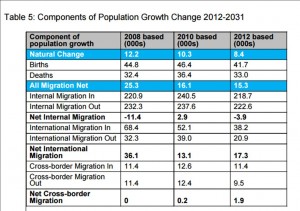The York Council has said that it will publish a draft of a new Local Plan next month.
 It will be fifth attempt in recent years to come up with a blueprint for the City which seeks both to conserve the natural and built heritage, while making provision for the additional 10,000 or so homes required over the next 20 years to meet the natural growth in population size (excess of births over deaths).
It will be fifth attempt in recent years to come up with a blueprint for the City which seeks both to conserve the natural and built heritage, while making provision for the additional 10,000 or so homes required over the next 20 years to meet the natural growth in population size (excess of births over deaths).
More controversial will be the Councils’ decision on economic expansion targets.
The “Big City” approach of the last Labour Council could have seen an additional 25,000 homes built in the City – most of which would have been occupied by inward (economic) migrants. The proposal attracted 14,000 objections. The policy led to Labour losing control of the Council in 2015 and since then a Tory/LibDem coalition has struggled to find common ground on house building numbers.
The LibDems were elected on a manifesto of conserving the Green Belt.
Labour politicians are now briefing that two Green Belt sites (at Whinthorpe & Clifton Gate) will get the go ahead, albeit with both reduced in size. However, both would have huge cost implications with a new access corridor being required to accommodate the first, while Cliftongate (between Clifton Moor and Skelton) would make dualling the A1237 essential.
The Council has been criticised for not coming up with a firm timetable for decision meetings on the new Plan. The only firm date given for public discussion is 30th June when apparently the Councils Executive will discuss it prior to formal public consultation being launched. Even this date has not been included in the Council’s Forward Plan of key decisions.
The Council statement reads;
(more…)


